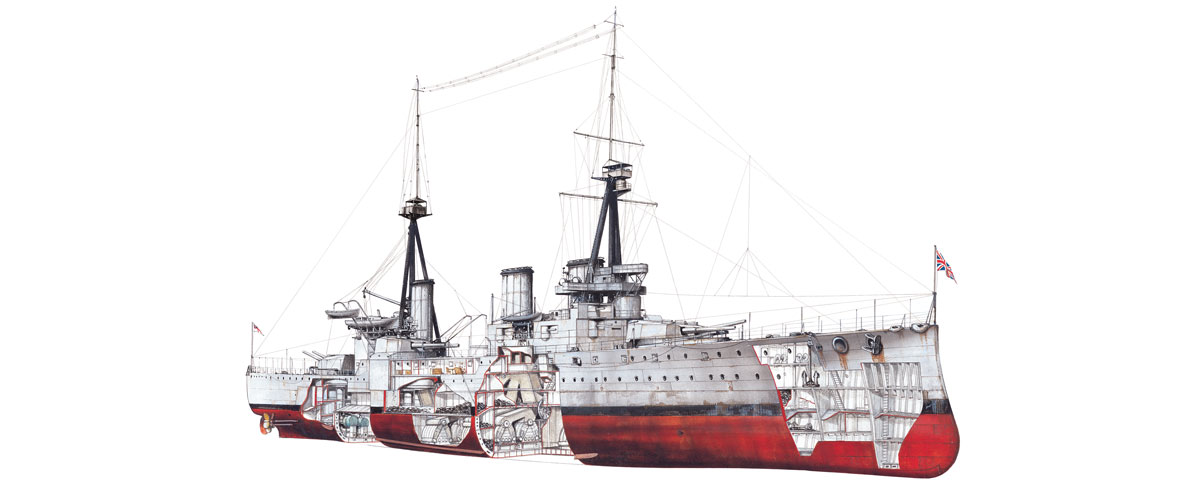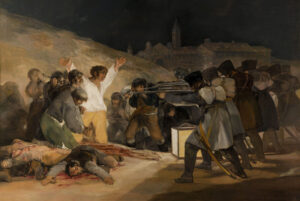Displacement: 17,530 metric tons
Length: 530 feet
Beam: 78.5 feet
Draft: 30 feet
Installed power: 31 Yarrow boilers
Propulsion: Four-shaft Parsons direct-drive steam turbines
Speed: 25.5 knots
Range: 2,270 nautical miles (23 knots), 3,090 nautical miles (10 knots)
Complement: 784 (up to 1,000 in wartime)
Armament: Eight BL 12-inch guns, 16 QF 4-inch guns, seven Maxim guns, five 18-inch torpedo tubes
Armor: Belt (4–6 inches), bulkhead (6–7 inches), barbettes (2–7 inches), turrets (7 inches), conning tower (6–10 inches), decks (1.75–2.5 inches)
Approved by the British Board of Admiralty on March 16, 1905, and commissioned on March 20, 1909, HMS Invincible represented the culmination of almost a half-century of technical advances that had compelled the Royal Navy, under Admiral Sir John “Jacky” Fisher, to undergo a radical redesign. Originally dubbed “armored cruisers” but reclassified “battlecruisers” in 1911, Invincible and its class sisters Inflexible and Indomitable were designed to deploy swiftly to wherever the Admiralty—with its new network of intelligence gathering and communications—ordered them, either to run down and outmaneuver enemy ships or outrun any that outgunned them.
The vessels had mixed fortunes in World War I. Inflexible and Indomitable failed to prevent the German battlecruiser Goeben and light cruiser Breslau from reaching Turkey in August 1914. During the Battle of Heligoland Bight on August 28 Invincible fired 18 shells at the German light cruiser Cöln—and missed. The battlecruiser concept saw its greatest success on December 8 when Invincible and Inflexible intercepted the German East Asia Squadron off the Falkland Islands and sank the armored cruisers Scharnhorst and Gneisenau. Indomitable helped sink the German armored cruiser Blücher off Dogger Bank on Jan. 24, 1915, but Inflexible was badly damaged by a Turkish mine in the Dardanelles on March 18, 1915.
Invincible itself proved just the opposite at Jutland on May 31, 1916, when the German battlecruisers Lützow and Derfflinger blew it in two and sank it in 90 seconds, killing Rear Adm. Horace Hood and 1,025 crewmen and leaving only six survivors. Although the sinking of Invincible and two similar battlecruisers raised doubts regarding the validity of the entire concept, more recent research suggests poor ammunition handling, rather than an unsound design, lay behind those disasters. Already obsolescent by war’s end, Inflexible and Indomitable were sold for scrap in 1921. MH





